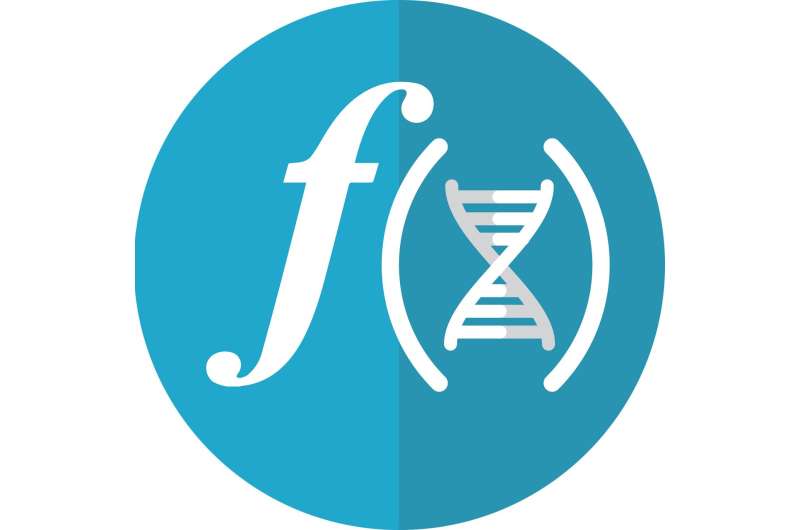This article has been reviewed according to Science X's editorial process and policies. Editors have highlighted the following attributes while ensuring the content's credibility:
fact-checked
peer-reviewed publication
trusted source
proofread
When is genome sequencing advisable? Human geneticists conduct clinical reference study

Scientists from the Broad Institute of MIT and Harvard, Harvard Medical School, and the University of Leipzig Medical Center have shown in two independent patient cohorts when a genome sequencing is beneficial in the diagnosis of genetic diseases.
The jointly published study provides valuable insights for diagnostic practice based on a broad dataset from research and clinical applications. The researchers present their findings in the New England Journal of Medicine.
Genetic mutations in human DNA can prevent proteins that perform important functions in the body from being formed correctly. This can lead to serious disorders that cause disease or even disability. Many of these diseases are already known and can be attributed to specific genes.
To diagnose them, clinicians use a standard procedure known as exome sequencing. This involves analyzing those segments of human DNA that are directly responsible for the correct formation of proteins. This coding part, the exome, makes up only around one percent of the total DNA, but is particularly relevant.
"However, in two-thirds of cases, exome analysis does not lead to a diagnosis, which raises the question of what to do next," says Professor Rami Abou Jamra. He is Professor of Medical Genomics at Leipzig University and Head of Genetic Diagnostics at the Institute of Human Genetics at the University of Leipzig Medical Center (UKL).
"For patients and their families, a clear diagnosis means a great deal: not only does it confirm that the disease is not their own fault—it also paves the way for public recognition and, where possible, personalized treatment," says the doctor.
In order to assess the benefits of genome sequencing compared to exome sequencing, scientists from the Broad Institute of MIT and Harvard and Harvard Medical School in Boston analyzed 744 families. These were sick children with a suspected genetic disease, and their parents. In some of whom exome sequencing was already performed and failed to provide a diagnosis.
The Institute of Human Genetics in Leipzig used genome sequencing to analyze 350 families in an independent patient cohort where exome sequencing had not shed any light. The first 78 cases were included in the joint study with the researchers in Boston.
Using a technique called short-read sequencing, the entire DNA, i.e. the genome, of all the families was cut into billions of small pieces and read. The researchers analyzed the data using bioinformatics software and algorithms.
"Compared to exome sequencing, genome sequencing provided clarity in an additional eight percent of cases: that is significantly more," explains Professor Rami Abou Jamra, who led the study in Leipzig.
"This method is particularly helpful if a genetic mutation that causes a disease is due to the absence of very small segments of DNA, the elongation of unspecific sequences, or if the mutation is not located in the coding part at all," says the researcher, adding, "In exome sequencing, the coding regions are extracted from the DNA in the laboratory and chemically enriched, which unfortunately leads to a loss of quality and information."
But it is precisely this information that could provide crucial clues. In addition, gene segments outside the exome also have important functions, such as regulating mechanisms that control protein synthesis. These segments are completely overlooked by exome analysis. Ultimately, the researchers hope to identify new disease patterns and mechanisms by taking a comprehensive look at the entire genome.
"Our data suggests that genome sequencing should be used more quickly, especially when exome sequencing has not provided clarity," says Professor Rami Abou Jamra.
"In the past, there was a lack of certainty in the literature as to when genome sequencing was advisable. Now, thanks in part to the work carried out in Leipzig, the large dataset obtained shows that the results are definitely viable for clinical application," says the scientist.
As Professor Rami Abou Jamra points out, another advantage of genome sequencing, although it is currently still around two and a half times more expensive than exome sequencing, is a long-term one: new genetic mutations associated with diseases are being discovered and documented all over the world, which means that once the genome sequencing data is available, it can easily be re-examined in the light of new knowledge.
And what's next? "We will read more genomes, and we will do it all with an even more revealing technique called long-read sequencing," says Professor Abou Jamra. "We want to decode all genetic diseases."
More information: Monica H. Wojcik et al, Genome Sequencing for Diagnosing Rare Diseases, New England Journal of Medicine (2024). DOI: 10.1056/NEJMoa2314761





















